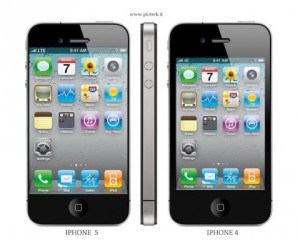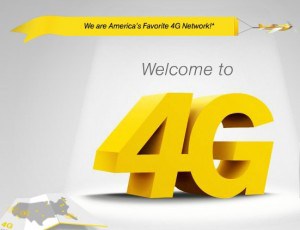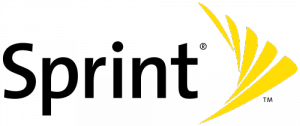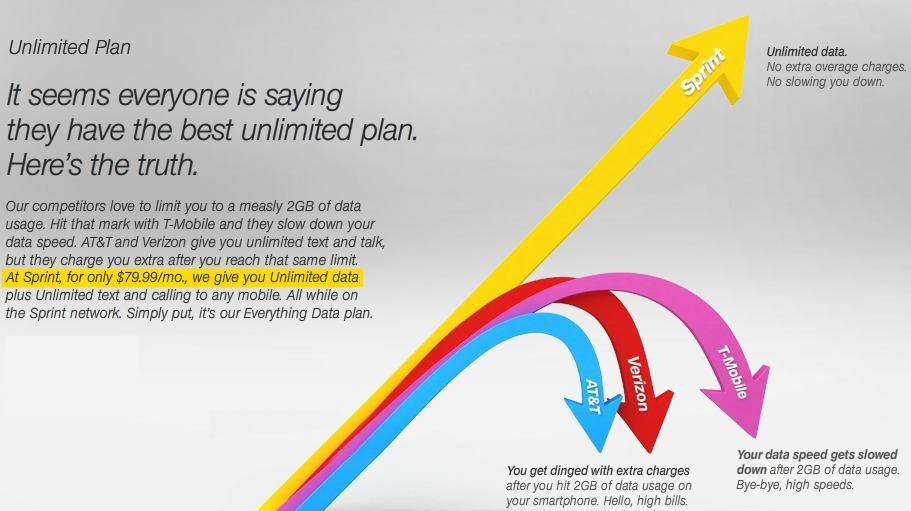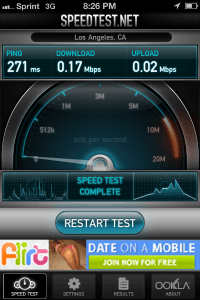 Sprint customers are not thrilled with their new neighbors — the Apple iPhone 4S crowd that just moved into the network.
Sprint customers are not thrilled with their new neighbors — the Apple iPhone 4S crowd that just moved into the network.
In several areas across the country, Sprint customers are howling about network speeds plummeting over the weekend, just as new iPhone owners began activating their phones.
“This is completely unacceptable,” Clive Dearstromm writes Stop the Cap! “I have been a Sprint customer for five years, and while their network has never been the fastest, what has happened since Friday morning is ridiculous. I can’t get beyond 210kbps.”
Dearstromm can’t even reliably access his e-mail on Sprint’s 3G network today, and Sprint has denied there is a service outage in Florida.
“Coincidence? I think not,” he adds.
Other Sprint customers have also noticed, and are not happy. In South Los Angeles, one customer reports speeds of around 170kbps on Sprint’s network.
“I moved from AT&T to Sprint because of unlimited data, but if this continues I might have to move back,” writes the customer. “I can’t even open a web page without taking a minute or two.”
Sprint denies there is a problem, telling PC Magazine:
“As always, Sprint is carefully monitoring the performance of the 3G network. We are looking into a small number of reports of slow data speeds when using the iPhone 4S, however there are also reports showing that Sprint’s network is the fastest, such as the Gizmodo report that came out earlier today. Speed tests represent a moment in time and are subject to many variables including weather, time of day, device, and proximity to a tower. Sprint will continue to monitor the feedback we are getting from our customers and will investigate and resolve any issues that may arise,” the company said in a statement.
PC Magazine questioned Gizmodo’s test results, suggesting Wi-Fi speed tests might be mucking up the accuracy of the results. By this morning, it was evident Sprint was in last place, compared with AT&T and Verizon, and because speeds slowed the most during peak usage times, it’s a sure sign of network congestion.
Apple iPhone owners are a demanding crowd, and many of them aren’t happy about their Sprint iPhone experience either. The new phone’s most important gimmick feature, Siri, does not work well on congested networks.
[flv width=”360″ height=”290″]http://www.phillipdampier.com/video/WNYW New York Siri and iPhone Activations 10-17-11.mp4[/flv]
WNYW-TV in New York found frustration demonstrating Siri, with or without the Sprint network. It’s also apparent wireless carriers had some early trouble activating the enormous number of new iPhone handsets. (6 minutes)
Customers want an explanation and an idea of when things will get better. Thus far, Sprint has asked customers with speed problems to report them to the company for investigation, but some customer service representatives candidly admitted Sprint was unprepared for the massive number of new customer activations since Friday morning.
If things don’t get better soon, some of Sprint’s newest customers may take their business elsewhere. Sprint accepts returns and penalty-free contract terminations within 14 days of the phone’s activation (not purchase) on Sprint’s network.
[flv width=”360″ height=”290″]http://www.phillipdampier.com/video/WPTZ W Palm Beach New Iphone4 launch the best yet for ATT 10-15-11.mp4[/flv]
Amidst dozens of stories of the iPhone 4S’ arrival, West Palm Beach’s WPTZ caught our attention as local law enforcement had to be called in to manage the inevitable traffic jams wherever the new phone went on sale. (2 minutes)


 Subscribe
Subscribe

